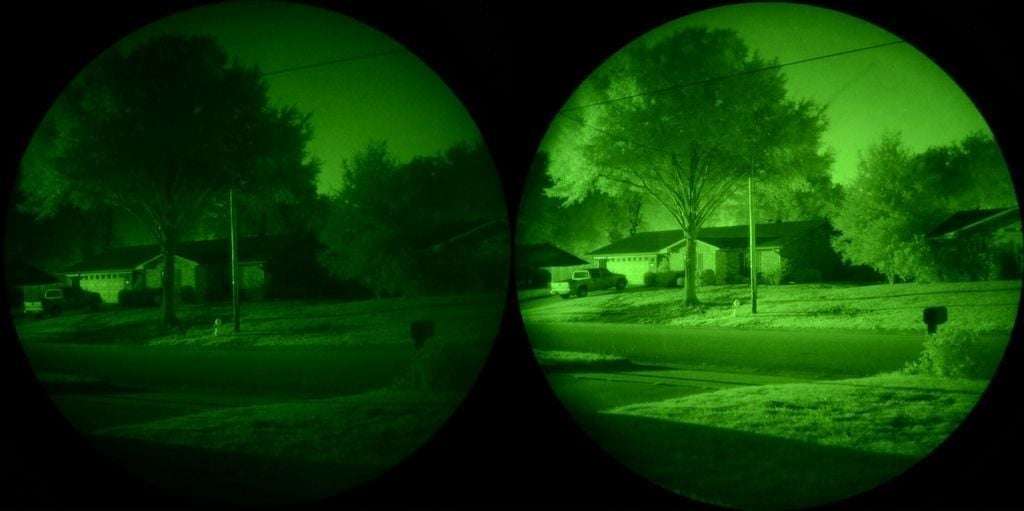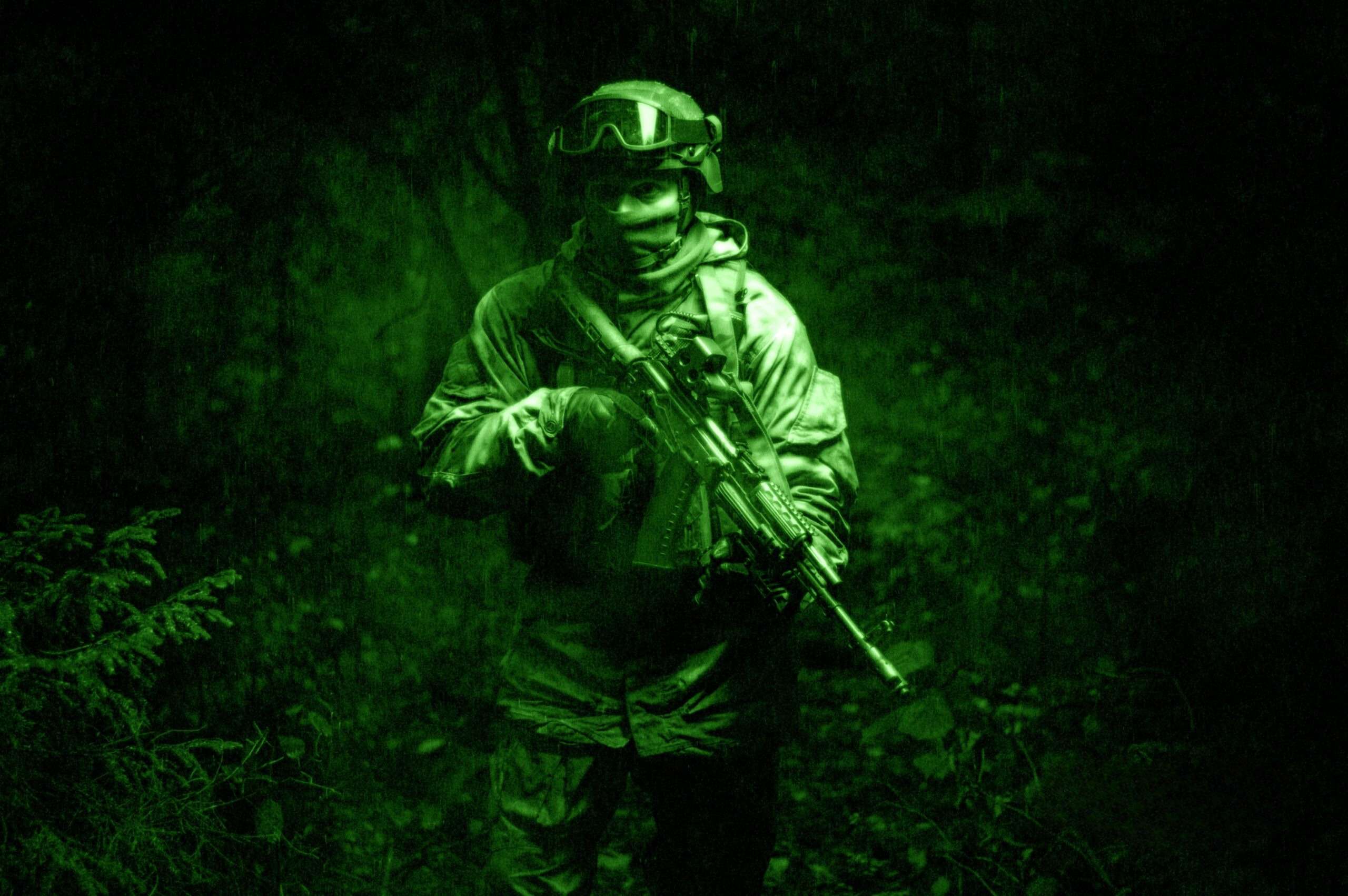Introduction
Unveiling the mysteries of the night has been an age-old pursuit, a quest that came to fruition with the inception of night vision technology. Although this journey started with Generation 0 devices during World War II, it took a significant stride forward with the advent of Generation 1 (Gen 1) night vision during the Vietnam War. This groundbreaking technology changed our interaction with the nocturnal world. Let’s immerse ourselves in the fascinating details, unique features, and compelling history of Gen 1 night vision.
Generation 0 VS. Generation 1
Gen 0:
Generation 0 night vision devices were based on active infrared technology. Some general characteristics included:
- Light amplification: Almost none. Relied on the use of an infrared light to illuminate the target area, which was then captured by the device and displayed to the user.
- Range: The effective range was largely dependent on the power of the infrared spotlight, but was typically around 50 to 100 yards.
- Image quality: Image quality was relatively poor by modern standards, with limited detail and significant blurriness. The constant IR illumination also produced an ‘eye-shine’ effect on targets.
- Battery life: These devices generally consumed more power due to the need to power an infrared spotlight, which led to relatively short battery life.
Generation 1:
Generation 1 night vision devices represented a major step forward in technology, with the introduction of passive light amplification. Some general characteristics included:
- Light amplification: Gen 1 devices can amplify existing light around 1,000 times. This made it possible to see in the dark without the need for an active IR illuminator, though a small illuminator was often included to improve image quality in very low-light conditions.
- Range: The detection range for a human-sized target was typically around 75 to 100 yards, though this could vary depending on the specific device and the amount of ambient light.
- Image quality: The image quality was significantly improved compared to Gen 0, but still had some issues with distortion (often described as a ‘fish-eye’ effect) around the edges of the image.
- Battery life: Battery life was generally improved compared to Gen 0 due to the lower power consumption of passive light amplification. However, it was still relatively short by modern standards.
The Advent of Gen 1

The birth of Generation 1 night vision technology during the tumultuous 1960s marked an era of profound transformation. The defining feature of Gen 1 devices was their shift from an active to a passive infrared system. To better grasp this, let’s delve into the distinction between these two technologies.
Active infrared systems, prevalent in Gen 0 devices, depended on an infrared spotlight to project light onto the area of interest. Comparable to an invisible flashlight, this system could be detected by anyone equipped with similar technology—a disadvantage in covert operations. In stark contrast, Generation 1 night vision devices harnessed existing light, such as moonlight or starlight, and amplified it to construct a usable image. This clandestine approach offered a tactical edge in military operations, making these devices more strategic and effective in the field.
The Inner Workings of Gen 1

At the heart of Generation 1 night vision devices is a powerful light amplification system. Incoming light photons hit the photocathode, triggering the release of electrons. These electrons, in turn, pass through a photomultiplier, a component that creates a domino effect of amplified electrons. Striking a phosphor screen, these multiplied electrons produce the image that the user perceives.
The characteristic green hue associated with night vision is a consequence of the phosphor screen, which emits green light. This color choice is not arbitrary; the human eye is particularly sensitive to green light, making it easier to discern details over prolonged periods. Generation 1 night vision devices are adept at producing lucid images over short distances, a capability that is well-suited for tasks requiring close-up views.
Recognizing the Limitations of Gen 1
Notwithstanding the remarkable advancement that Gen 1 brought to the field of night vision, it wasn’t free of limitations. For instance, these devices were notorious for a ‘fish-eye’ effect caused by the curvature of the lens. This resulted in distorted, blurry images at the edges, compromising overall clarity.
Moreover, the reliance on some degree of ambient light was a double-edged sword for Generation 1 night vision devices. While it allowed stealthy operation, it also rendered these devices practically ineffective under extremely dark conditions or moonless nights.
The high energy requirement posed another challenge for these pioneering devices. Constant power supply was necessary to amplify light, which resulted in short battery life and the need for frequent battery replacements or recharging.
The Enduring Legacy of Gen 1
Despite these limitations, the Gen 1 systems set the foundation for the high-tech night vision devices we see today. It laid the groundwork for passive infrared systems, a principle that subsequent generations improved upon, yielding better performance and efficiency.
Today, Generation 1 night vision devices still hold their charm for hobbyists and casual users. They offer an affordable gateway into the world of night vision technology. While they may not boast the sophistication and performance of their Gen 3 and Gen 4 successors, they provide a cost-effective solution for those keen to explore the world after sunset.
Conclusion
The leap from Generation 0 to Gen 1 marked a significant milestone in our endeavor to penetrate the night’s obscurity. As we continue to innovate and refine this technology, understanding the historical context and functionality of Gen 1 devices underscores the human drive to explore and adapt. Each generation of night vision technology represents a step forward in our ceaseless journey to harness the power of the night.

